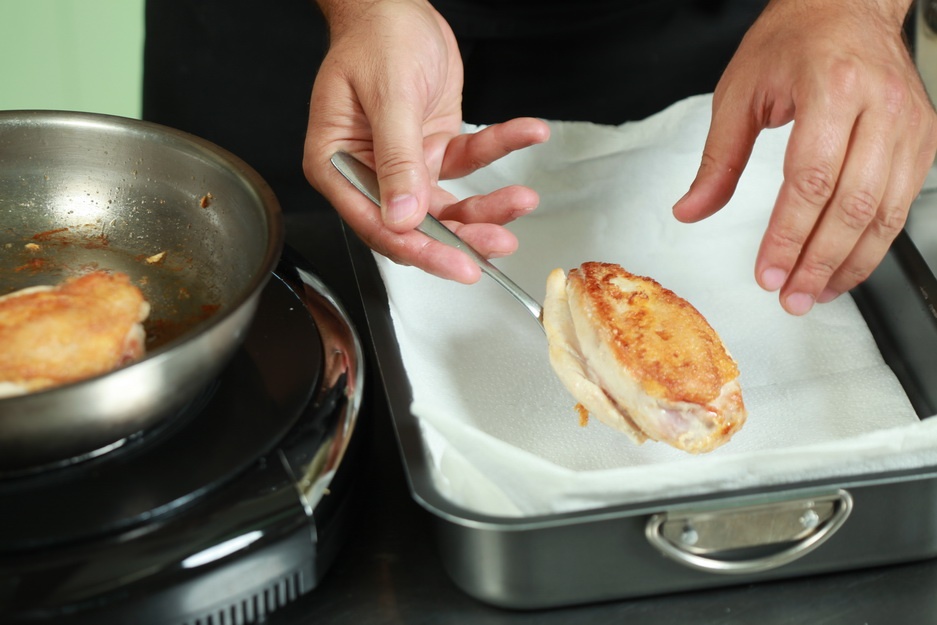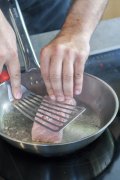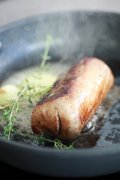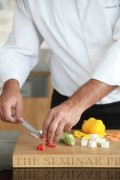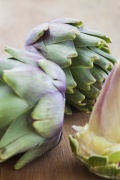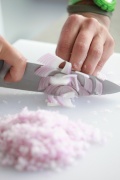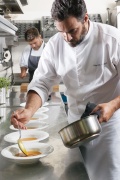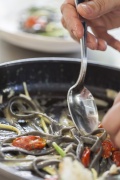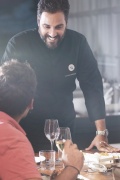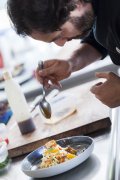 TIPS
TIPS
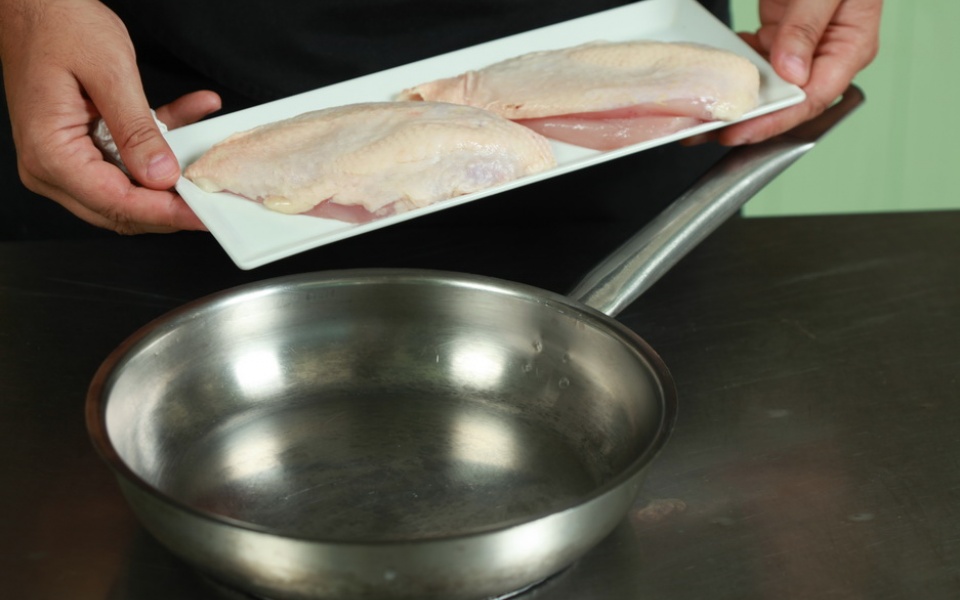
Sautéing is ideal for:
- Small, tender (whole or cut) pieces of meat, such as e.g., chicken breasts, pork or veal tenderloin.
- Small fish, such as e.g., red mullet or filleted portions of large fish, such as e.g., salmon and monkfish.
- Fruit and vegetables.
See the sautéing technique step-by-step, by following the photos order.
-
Select the right size pan.
The pan must be large enough for the food to fit comfortably and be in complete contact with the heated surface.
If the quantity of the food is too great, it will give off liquid without coloring.
If the quantity is too small, there is the danger that it will burn.
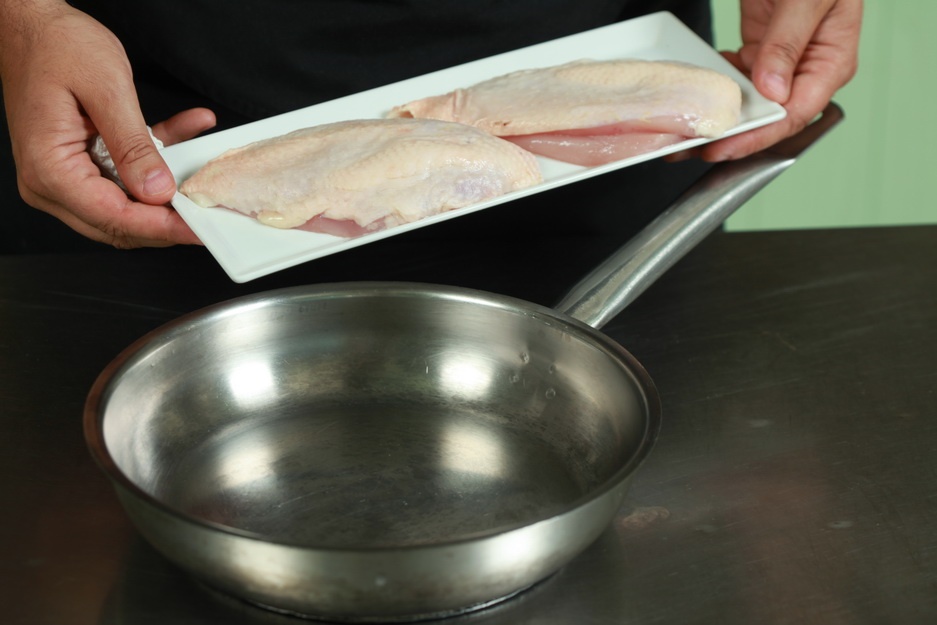
-
Heat the pan well to a high temperature.
In recipes one often reads about preheating the oven but almost never about preheating when using the frying pan.
The frying pan must be preheated well so that you achieve good coloring and avoid the discharge of liquid and so that you avoid the danger of the food sticking.
The size and preheating of the pan are the most important factors in the entire process but are usually the ones most likely to be overlooked.
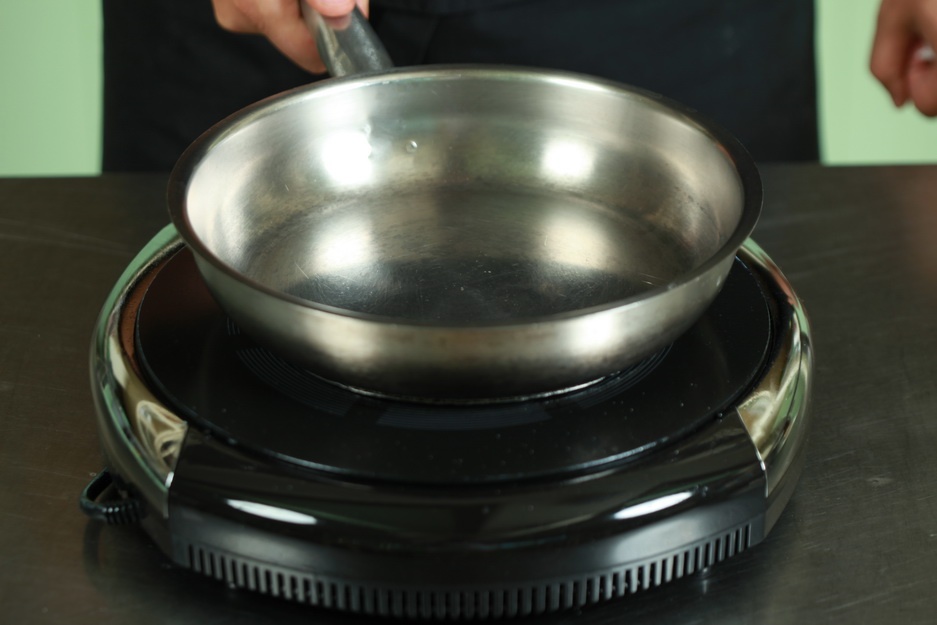
-
Add the right quantity of fat.
The right quantity of fat will form a light coating on the surface of the pan; its sole purpose is to ensure the uniform transfer of heat from the metal to the food
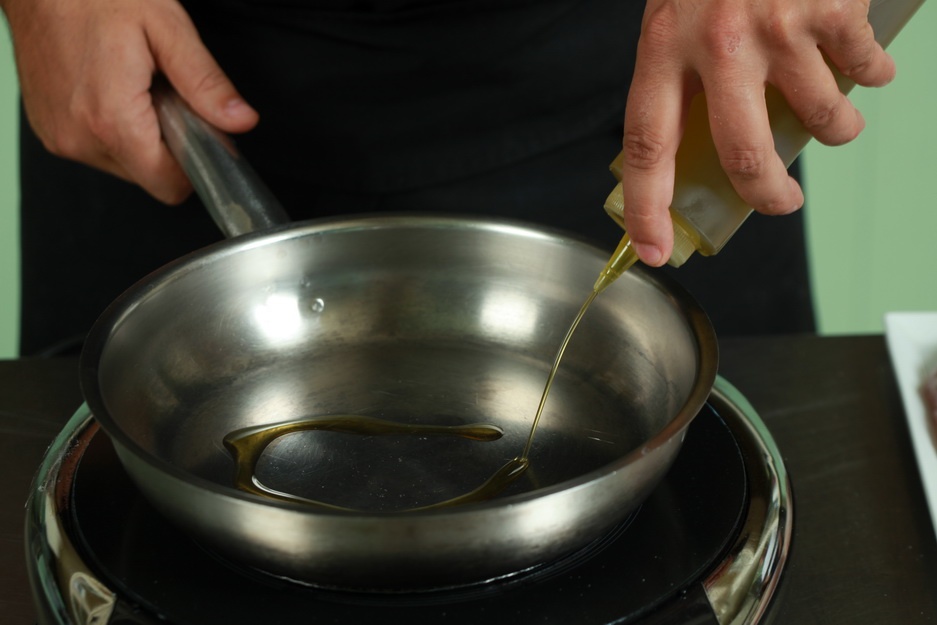
-
Dry and season the food.
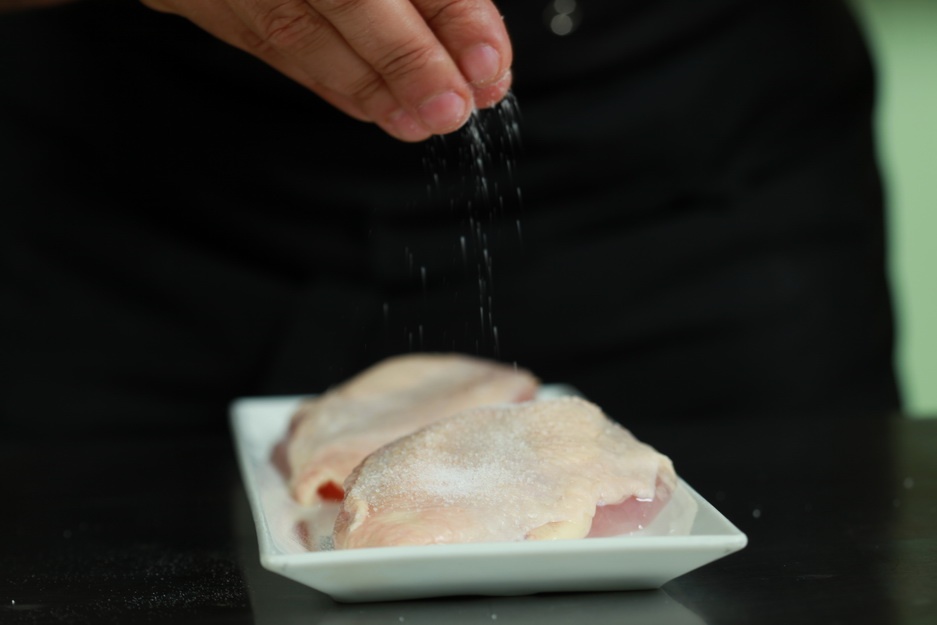
-
Place the food in the frying pan.
Cook for 2-3 minutes and then lower the temperature to medium to high until the food turns an attractive and intense color.
60% to 90% of the cooking, depending on the food, is achieved on the first side. If the food has skin, e.g. chicken or fish, you must always place it skin down first so that the skin becomes crisp.
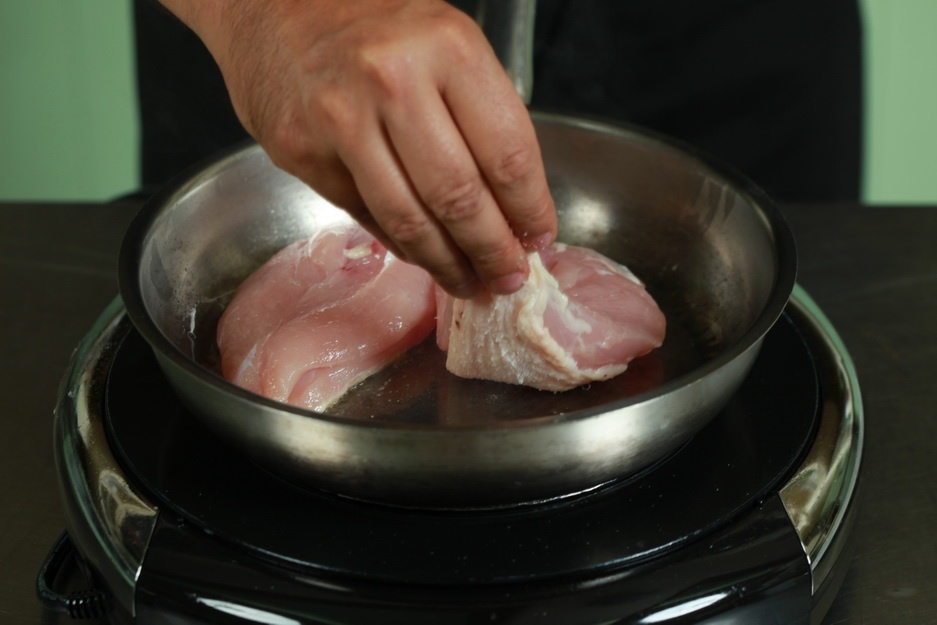
-
Turn over and finish cooking.
Ideally, in sautéing, the food will be cooked entirely in the frying pan.
Alternatively, and because space is usually limited on the hob, you could, at this stage transfer the food onto a baking tin lined with non-stick paper and finish the cooking process in the oven (160°C-180°C).
Also, if you frying pan does not have plastic parts, you can place it directly in the oven. This enables you to free cooker hobs for other possible tasks.
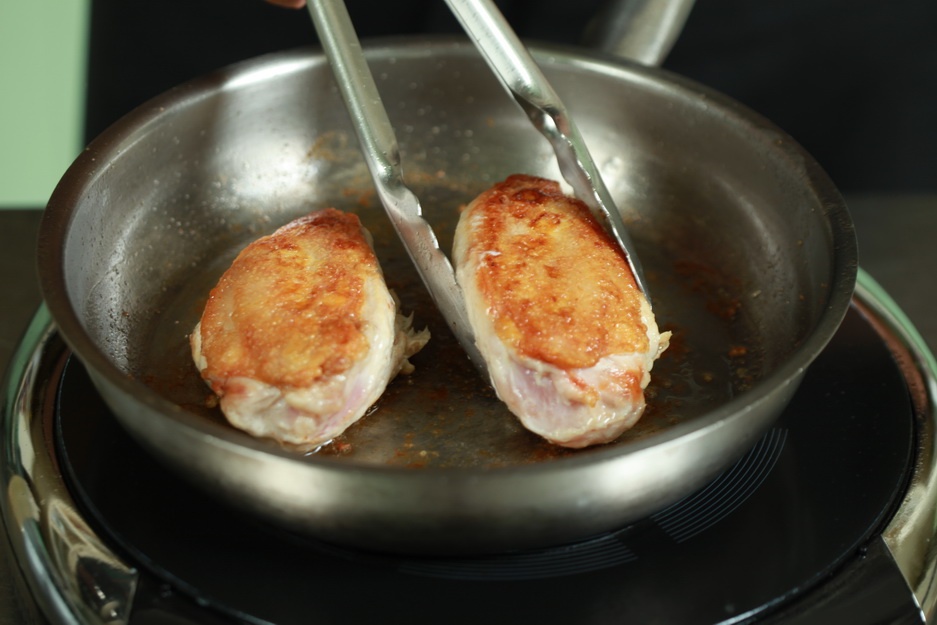
-
Remove food onto absorbent paper.
This helps remove the excess fat which may be on the surface of the food.
- Sauce Preparation:
Wipe the frying pan lightly of the excess fat, replace on the heat and continue with the preparation of the sauce.
This step is optional and needs to be followed only if you wish to prepare a sauce as an accompaniment using this method.
If the process has been executed correctly to this stage, a very tasty crust will have formed on the surface of the pan. It should have a nice color and aroma, a sign that everything has been done properly and that the crust is ready for use.
If, on the contrary, its color and aroma are close to burning point, the crust is unsuitable for use. By adding liquid (wine, stock, water) to the frying pan you can create the flavor base for the sauce with which you wish to accompany your dish.
